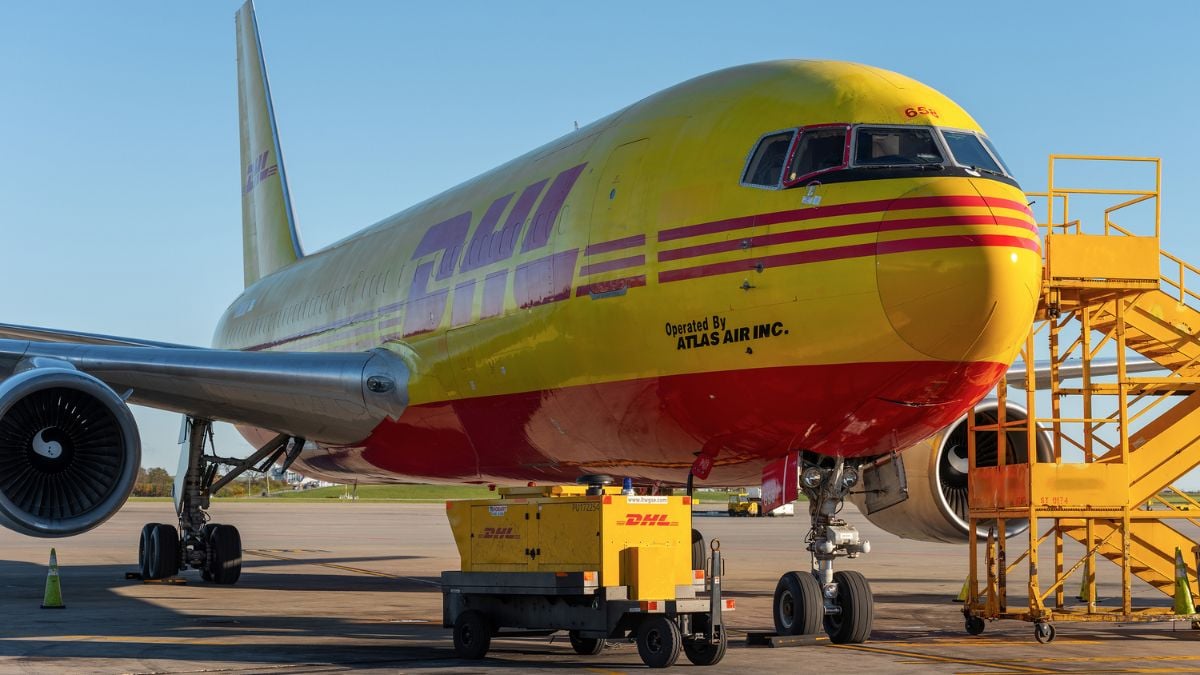
The tariffs imposed by U.S. President Donald Trump have begun to affect various economic sectors, with businesses opting to raise prices or eliminate certain services due to high duties. One of those affected is DHL, one of the country’s leading parcel delivery companies, which has announced it will suspend global shipments. Here’s what we know.
Why Is DHL Suspending Its Global Shipments?
In a statement published on its website, DHL announced that due to recent regulatory updates by U.S. Customs, the company is experiencing multi-day delays in transit to the U.S. from any origin for shipments with a declared customs value over USD 800.
As a result of tariffs, starting Monday, April 21, and until further notice, DHL will temporarily suspend the pickup and delivery of business-to-consumer (B2C) shipments to individuals in the United States with a declared customs value exceeding that amount.
According to the logistics company, business-to-business (B2B) shipments to U.S. companies with a declared value over USD 800 will not be affected by the suspension, although they may still experience delays. Additionally, B2B and B2C shipments with a declared customs value under USD 800 will not be subject to this suspension.
“This is a temporary measure, and we will share updates as the situation evolves,” the company said.
ALSO READ Harvard Sues Trump Administration: 5 Key Facts
DHL’s History
DHL was founded by Adrian Dalsey, Larry Hillblom, and Robert Lynn in 1969. It has since become the world’s leading logistics company, employing a workforce of 600,000 people across more than 220 countries and territories.
The parcel delivery company operates under the umbrella of the DHL Group, which also includes another major brand: Deutsche Post. Its wide range of international services includes parcel and express delivery, freight transportation, comprehensive supply chain management, and specialized logistics for e-commerce.
Does DHL Inspect Shipments?
Yes. The company has the authority to open and inspect parcels to ensure security. This can be done without prior notice, in accordance with customs regulations and other governing rules.
How Long Will It Take for My DHL Shipment to Arrive?
DHL offers an Express service, known for having the fastest transit times in the industry, which means your package could arrive within a few hours. However, delivery time depends on the destination country and its local customs procedures.
What are tariffs and how are they applied?
Tariffs are taxes applied to products imported from foreign nations. This tax, paid to the government, is the responsibility of the company that brings the foreign goods into the country. However, some companies may choose to pass on all or part of this cost to their customers.
Why is Donald Trump imposing tariffs?
President Donald Trump has stated that tariffs are a key component of his economic strategy, as he seeks to promote manufacturing in the U.S., protect jobs, increase tax revenues, and stimulate economic growth.
Trump aims to revitalize and rebuild the U.S. manufacturing industry, which has lost many jobs over the past 40 years, largely due to the transfer of these jobs to countries with lower wages, such as Mexico or China. Additionally, the president believes that the U.S. is facing a significant trade deficit and that other nations are taking advantage of the opportunity to sell their products to U.S. consumers.
ALSO READ When can you play the new Star Wars Galatic Battle in Fortnite?
What Tariffs Has Donald Trump Imposed?
Since returning to the White House for his second term as President of the United States, Donald Trump has signed executive orders to implement a series of tariffs on U.S. trade partners. These include:
- 25% on all products from Mexico and Canada that do not comply with the United States-Mexico-Canada Agreement (USMCA)
- 10% on Canadian energy
- 25% on steel and aluminum imports
- 25% on all foreign-manufactured automobiles and auto parts
- 20% on products from the 27 countries of the European Union
- 145% on imports from China
- 49% on products from Cambodia
- 48% on products from Laos
- 46% on products from Vietnam
- 45% on imports from Myanmar
- 37% on imports from Thailand
- 32% on products from Indonesia
- 26% on products from India
- 24% on products from Japan
- 24% on imports from Malaysia
- 24% on products imported from Brunei
- 18% on products imported from the Philippines








